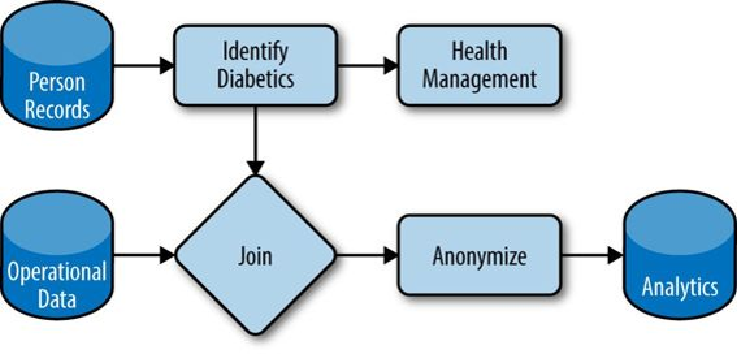Database Reference
In-Depth Information
Composability over Frameworks
The patterns described here take on a particular class of problem in healthcare centered
around the person. However, this data can serve as the basis for understanding operational
and systemic properties of healthcare as well, creating new demands on our ability to trans-
form and analyze it.
Libraries like Crunch help us meet emerging demands because they help make our data and
processing logic composable. Rather than a single, static framework for data processing,
we can modularize functions and datasets and reuse them as new needs emerge.
Fig-
ure 22-2
shows how components can be wired into one another in novel ways, with each
box implemented as one or more Crunch
DoFns
. Here we leverage person records to
identify diabetics and recommend health management programs, while using those com-
posable pieces to integrate operational data and drive analytics of the health system.
Figure 22-2. Composable datasets and functions
Composability also makes iterating through new problem spaces easier. When creating a
new view of data to answer a new class of question, we can tap into existing datasets and
transformations and emit our new version. As the problem becomes better understood, that
view can be replaced or updated iteratively. Ultimately, these new functions and datasets
can be contributed back and leveraged for new needs. The result is a growing catalog of
datasets to support growing demands to understand the data.

